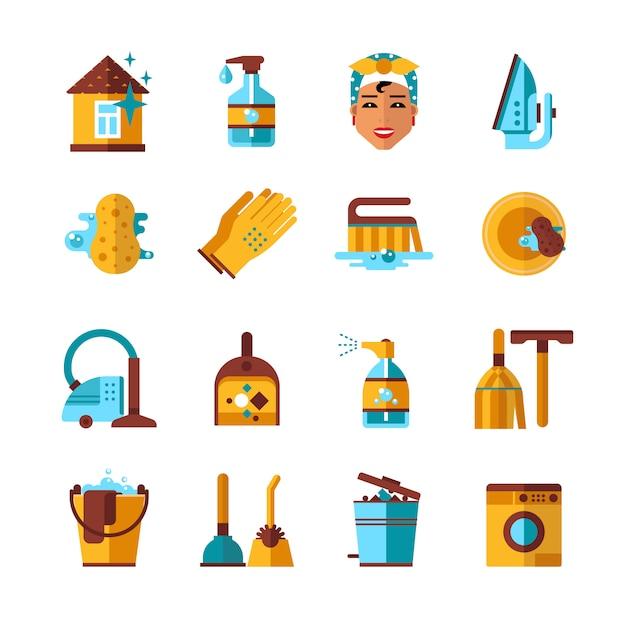Housekeeping is an essential aspect of maintaining a clean and organized living space. Whether it’s in our homes or hotels, proper housekeeping ensures a hygienic environment and promotes a sense of well-being. But what exactly does housekeeping entail, and what are the different types of housekeeping?
In simple terms, housekeeping refers to the routine tasks involved in cleaning, organizing, and maintaining a space. It goes beyond just tidying up and includes various activities like dusting, vacuuming, disinfecting, and decluttering. Housekeeping not only enhances the visual appeal of a place but also eliminates potential health hazards.
In this blog post, we will explore the different types of housekeeping and delve into the specific tasks associated with each. From hotel housekeeping to home maintenance, we will uncover the nuances of various housekeeping practices. Additionally, we will discuss the importance of regular sanitization and the day-to-day activities involved in housekeeping.
Join us as we dive into the world of housekeeping and discover how this crucial practice contributes to a clean and healthy living environment.
Types of Housekeeping: From Tidying to Deep Cleaning
Whether you’re a clean freak, a clutter connoisseur, or someone who just wants to maintain a certain level of orderliness, housekeeping is an essential part of our daily lives. But did you know that housekeeping isn’t just about sweeping floors or doing laundry? It encompasses a variety of tasks and techniques that cater to different needs. Let’s dive into the wonderful world of housekeeping and explore its various types.
1. General Housekeeping: A Clean Start for Every Home
General housekeeping is the foundation for a tidy and organized home. It involves regular cleaning tasks that help maintain cleanliness and hygiene. From dusting surfaces to mopping floors, vacuuming carpets to wiping windows, these tasks keep the overall cleanliness of your living space intact. General housekeeping is like the backbone of a clean and pristine home — without it, the mess would start to pile up faster than you can say “cleaning frenzy!”
2. Deep Cleaning: A Thorough Overhaul for Your Squeaky-Clean Soul
Deep cleaning is like hitting the reset button for your home’s cleanliness. It involves intensive and meticulous cleaning that goes beyond the surface level. Think of it as spring cleaning on steroids. From scrubbing grout to descaling kitchen appliances, deep cleaning ensures that no nook or cranny is left untouched. It’s the type of cleaning that makes your home look and feel brand new, giving you that satisfying sense of accomplishment that only comes from banishing dirt and grime from every corner.
3. Specialized Housekeeping: Catering to Unique Needs
Sometimes, general housekeeping isn’t enough. Certain situations or environments require specialized housekeeping. From hospitals to hotels, each setting has its own unique cleaning requirements. For example, hospital housekeeping involves stringent sanitation measures to prevent the spread of infections, while hotel housekeeping focuses on creating a welcoming and comfortable environment for guests. Specialized housekeeping requires knowledge of specific cleaning methods, protocols, and sometimes even certifications to ensure the highest standards of cleanliness are met.
4. Eco-Friendly Housekeeping: Keeping It Clean, Keeping It Green
With the increasing concern for the environment, eco-friendly housekeeping has gained popularity. This type of housekeeping emphasizes the use of natural and environmentally friendly cleaning products and techniques, reducing our carbon footprint while maintaining a clean and healthy living space. From homemade cleaners using vinegar and baking soda to opting for sustainable cleaning tools, eco-friendly housekeeping is a small step towards a greener tomorrow.
5. Self-Care Housekeeping: Decluttering the Mind
Housekeeping isn’t limited to just physical cleaning; it also extends to the mental and emotional aspects of our lives. Self-care housekeeping involves creating a peaceful and clutter-free environment that promotes relaxation and well-being. This might mean decluttering your space, organizing your belongings, or creating a calming ambiance through scented candles or soothing music. By taking care of our surroundings and creating a serene atmosphere, self-care housekeeping allows us to rejuvenate and recharge.
Housekeeping comes in various types, each serving a unique purpose. Whether you’re aiming for a spotless home, a fresh start, or a clear mind, there’s a type of housekeeping that suits your needs. So, roll up your sleeves, put on your favorite cleaning tunes, and embark on your housekeeping adventure. Your home will thank you, and who knows, you might just discover a hidden talent for scrubbing while you’re at it! Happy cleaning!
Keywords: Types of Housekeeping, General Housekeeping, Deep Cleaning, Specialized Housekeeping, Eco-Friendly Housekeeping, Self-Care Housekeeping
FAQ: What are different types of housekeeping
Housekeeping is an essential aspect of maintaining a clean and organized living or working space. From hotels to homes, housekeeping plays a crucial role in creating a pleasant environment. In this FAQ-style blog post, we will explore the various types of housekeeping and answer common questions about this important task. So, let’s dive in!
What are the steps of cleaning
Cleaning typically involves several steps to ensure a thorough job. Here are the five main steps:
-
Preparation: Before diving into the cleaning process, it’s essential to gather the necessary tools and supplies. This includes cleaning agents, gloves, mops, brooms, and more.
-
Dusting: Dusting is the first step in cleaning any space. From furniture to surfaces, removing dust helps to create a fresh and tidy atmosphere.
-
Vacuuming: Moving on to the floors, vacuuming is crucial for removing dirt, debris, and pesky crumbs. It’s like giving your carpets and rugs a revitalizing massage!
-
Mopping: Now it’s time to tackle those hard floors. Mopping helps to remove stubborn stains, spills, and any remaining dirt, leaving your floors sparkling clean.
-
Finishing Touches: The final step involves adding those little touches that make a space feel truly clean. It might include arranging furniture, fluffing pillows, or even spritzing a refreshing fragrance.
What is housekeeping in simple words
Housekeeping can be summed up as the act of cleaning, organizing, and maintaining a space to ensure it is clean, comfortable, and aesthetically pleasing. It involves a variety of tasks, such as dusting, vacuuming, mopping, and tidying up, all aimed at creating a welcoming environment.
What is the reason for the cleaning step in the 5-step process
The cleaning step in the 5-step process is essential because it helps to eliminate dirt, bacteria, allergens, and other unwanted particles from surfaces. It not only improves the visual appearance of a space but also promotes hygiene and reduces the risk of illnesses or allergies. Plus, a clean environment simply feels more inviting and refreshing!
What is the three-step cleaning process
The three-step cleaning process, also known as high-level cleaning, is commonly used in professional establishments such as hotels. It involves three main stages:
-
Cleaning: This initial step includes the removal of dirt, dust, and debris from surfaces using appropriate cleaning agents and tools.
-
Sanitizing: After cleaning, the next step is sanitization, which targets the elimination of harmful bacteria, viruses, and other microorganisms. This helps to create a hygienic environment, especially in shared spaces.
-
Disinfecting: Disinfecting goes a step further by using chemicals or heat to kill specific pathogens, ensuring a higher level of cleanliness. It’s like a superhero swooping in to save the day, defeating germs left and right!
What is hotel housekeeping definition
Hotel housekeeping refers to the specialized form of housekeeping found in hotels, resorts, and similar accommodations. It involves a range of tasks aimed at maintaining cleanliness, comfort, and orderliness within guest rooms, common areas, and facilities. Hotel housekeeping staff are the unsung heroes who ensure that your room feels like a peaceful sanctuary during your stay.
What are different types of housekeeping
Different types of housekeeping exist to cater to specific needs and environments. Here are a few notable ones:
1. Domestic Housekeeping
Ah, the classic! Domestic housekeeping involves maintaining cleanliness and organization within households. From keeping the kitchen spick and span to ensuring laundry is fresh and folded, domestic housekeeping keeps homes running smoothly.
2. Commercial Housekeeping
For businesses, commercial housekeeping comes to the rescue. This type focuses on maintaining cleanliness and tidiness in offices, retail stores, and other commercial establishments. It helps create an inviting environment for both employees and customers.
3. Hospital Housekeeping
Hospitals require specialized housekeeping to maintain strict hygiene standards. Hospital housekeeping involves rigorous cleaning, sanitizing, and disinfecting to minimize the spread of infections and maintain a safe and healthy environment for patients and staff.
4. Industrial Housekeeping
In industrial settings, such as factories or manufacturing plants, industrial housekeeping is key. This type of housekeeping focuses on maintaining cleanliness, safety, and orderliness within the production areas. It ensures a smooth workflow and reduces the risk of accidents.
What should be Sanitized regularly
Regular sanitization is crucial to maintain cleanliness and minimize the presence of harmful germs. Here are a few areas that should be regularly sanitized:
1. Surfaces and Countertops
Frequently touched surfaces, such as doorknobs, light switches, and countertops, should be sanitized daily to minimize the spread of germs.
2. Bathroom Fixtures
Toilets, sink faucets, and shower handles in bathrooms are hotspots for bacteria. Regular sanitization helps keep these areas clean and hygienic.
3. Kitchen Utensils
Kitchen utensils and cutting boards where raw meat or vegetables are prepared should be properly sanitized to prevent cross-contamination and ensure food safety.
4. Electronics
Our beloved gadgets, such as smartphones, tablets, and keyboards, are breeding grounds for germs. Regularly sanitizing these devices helps to keep them clean and our hands germ-free.
What are the housekeeping activities
Housekeeping activities encompass a wide range of tasks required to maintain a clean and tidy space. Some common housekeeping activities include:
1. Dusting and Polishing
Bye-bye, dust bunnies! Dusting and polishing surfaces, furniture, and fixtures help maintain a neat and gleaming appearance throughout the space.
2. Vacuuming and Sweeping
Sayonara, dirt! Vacuuming and sweeping effectively remove dirt, debris, and allergens from floors, ensuring a clean and welcoming environment.
3. Bed Making
Making beds with crisp, fresh sheets is an art form. It not only enhances the aesthetic appeal but also provides a comfy haven for relaxation.
4. Laundry and Linen Management
Keeping the linens clean and fresh is essential. From washing and folding to organizing and storing, proper laundry and linen management ensure a comfortable stay.
5. Waste Management
Taking out the trash and ensuring proper waste disposal is a vital housekeeping activity. It helps maintain cleanliness and eliminates unpleasant odors.
6. Room Setup and Arrangement
Arranging furniture, decor, and amenities in an appealing and functional manner is an important housekeeping activity, creating a comfortable and inviting ambiance.
7. Inventory Management
Maintaining stock levels of cleaning supplies, toiletries, and other essential items ensures that everything is readily available for both guests and housekeeping staff.
8. Reporting and Documentation
Housekeeping involves recording any maintenance issues, damages, or items that require attention. Proper reporting and documentation ensure timely repairs and replacements.
Housekeeping takes on various forms depending on the setting and purpose. Whether it’s domestic, commercial, hotel, or industrial, maintaining cleanliness and orderliness is vital. By understanding the different types of housekeeping and the associated activities, we appreciate the hard work of those who keep our environments spick and span. So, next time you experience a clean and well-organized space, give a silent cheer for the housekeeping heroes who made it possible!

